OMEGA Case Studies
Project Profiles of 30 Mega Urban Transport Projects (MUTPs) case studies | The OMEGA 2 Project
The Omega Centre critically examines thirty international experiences in the planning, appraisal and evaluation of MUTPs and their impacts in the Developed World
This project critically examines thirty international experiences in the planning, appraisal and evaluation of Mega Urban Transport Projects (MUTPs) and their impacts in theDeveloped World. Its overall aim is to ascertain what constitutes a ‘successful project’ in the context of our fast changing world where visions of sustainable development are increasingly coming to the fore as a basis for assessing future development. It is undertaken with the later intention to extend this research to the Developing World with additional international funds once acquired. The current project which commenced in October 2006 has set out a core 5-year research programme, and assembled a worldwide network of ten university partners to collaborate on the research under the overall Directorship of Professor Harry T. Dimitriou.
For the purposes of this core programme, MUTPs are confined to post-1990 completedroad, rail, bridge, tunnel, or projects combining these types of links, costing in excess of US$500m (at 1990 prices), located either within urban areas or having a significant impact on urban and metropolitan development.
Australia
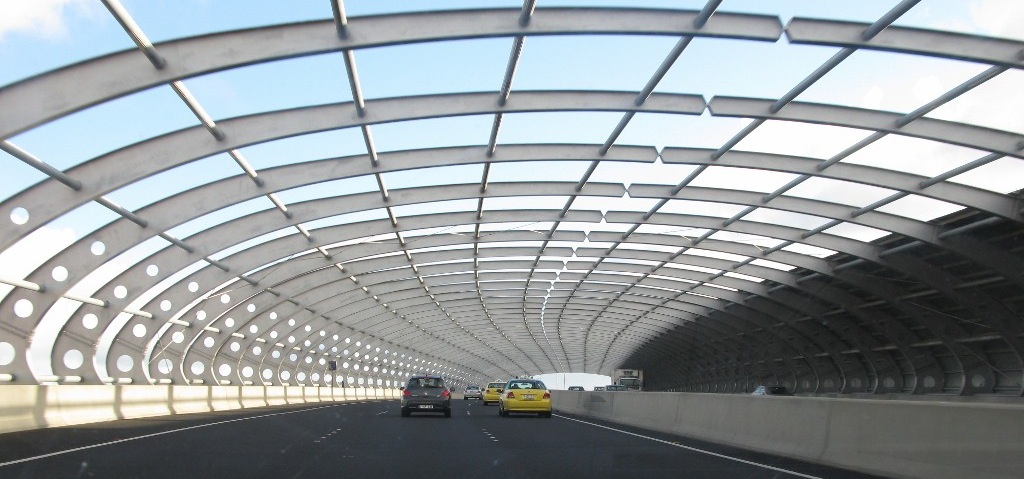
CityLink joins three existing radial highways together with tolled sections of road to provide a fast route through the centre of Melbourne. An electronic tolling system was developed and implemented as part of the project. The project was funded through a private sector concession contract. It is associated with the redevelopment of unused docklands between the central business district and the River Yarra, and the expansion of container traffic through the city’s port. Downloads
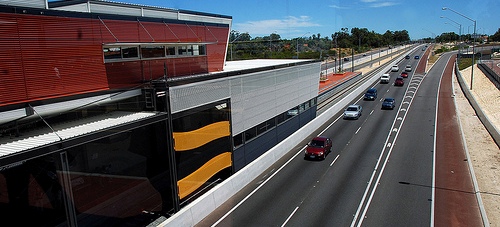
South West Corridor Railway is a 70km inter-urban railway line running from Perth, the capital of Western Australia, to the town of Mandurah. The project originated in a long-term aspiration to resurrect the passenger rail network in the region, and includes nine stations, associated bus and park-and- ride facilities, transit-oriented developments, and revisions to bus routes to provide feeder services into rail stations. Downloads
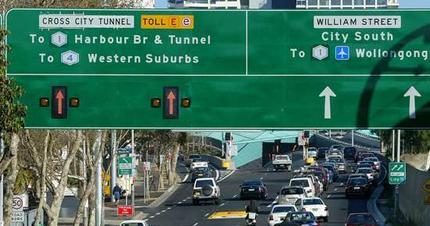
Cross City Tunnel (CCT) is a privately financed, constructed, owned and operated toll road which passes to government after 18 December 2035. Improvements to surface roads and pedestrian facilities, and traffic calming measures, were also implemented as part of the project. Its engineering and construction are considered exemplary, and it opened ahead of schedule. Within a year, however, traffic volumes were only a third of those forecast, the project had been the subject of a Parliamentary Inquiry and the concessionaire had been declared insolvent. The new owners expect to make a profit. Downloads
France
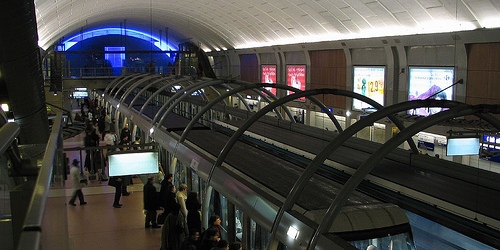
Météor (Paris Metro Line 14) is the first driverless line to be fully integrated into the Paris metro system. The planning and construction process was fast in comparison to other French transport projects, but funding problems caused delays and the line was opened in three sections, in 1998, 2003 and 2007.
Météor is associated with three urban development zones in the city – Paris Rive Gauche, Chalon and Corbineau-Lachambeaudie to Bercy – and with the regeneration of the 13th arrondissement.
Downloads
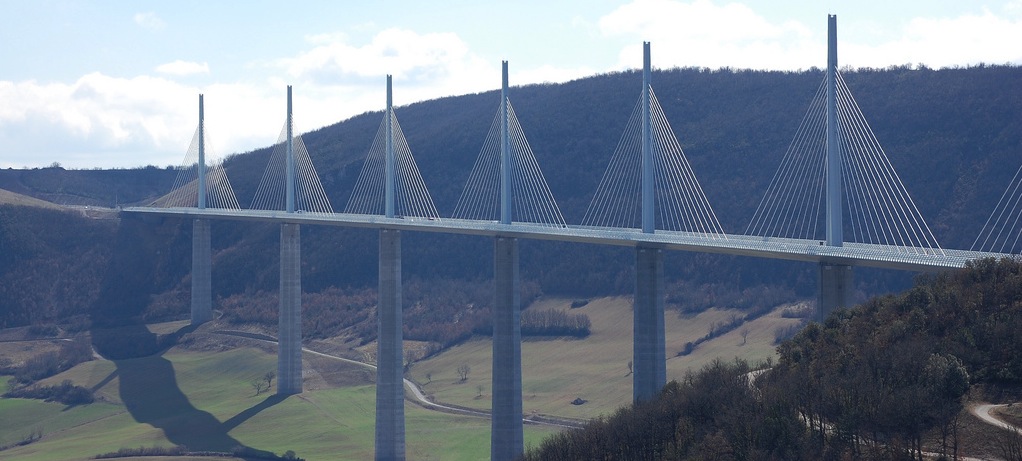
The world’s tallest and longest multispan cable-stayed bridge in the world, the Millau Viaduct is often described as a work of both engineering prowess and architectural grace, and has become a tourist attraction in its own right. It is part of the A75 motorway, crossing the Tarn Valley in the south of France.
It was built in only three years, with 2,000 sections of steel roadway manufactured off-site, lifted into place and aligned using GPS.
Downloads
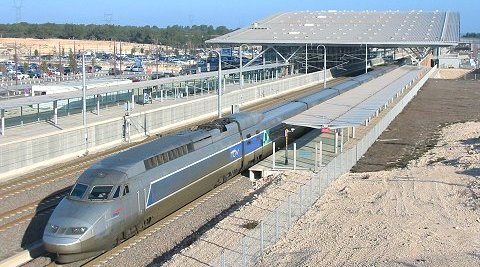
TGV Méditerranée is part of the TGV Network of high speed rail lines linking major cities in France. It opened in 2001.
Initially controversial, the project sparked off a protest movement and helped trigger new legislation affecting the decision-making procedure for major transport projects. With a journey time of three hours between Paris and Marseille, the line has attracted passengers from the airline and now handles two-thirds of all journeys.
Downloads
Germany
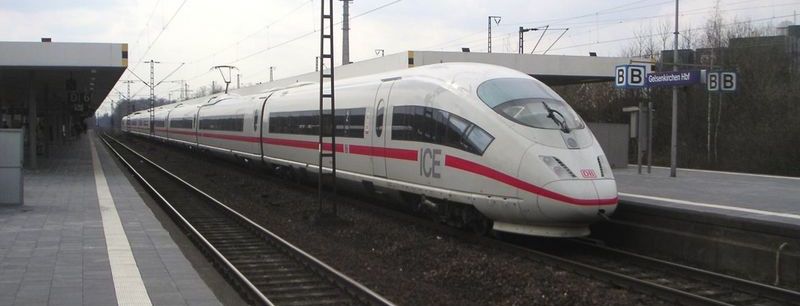
Opened in 2002, the 177km NBS Cologne-Rhine/Main line is the first rail track in Germany to be built exclusively for high-speed passenger trains. One of the steepest high-speed lines in the world, it require trains with a high power-to-weight ratio such as the new ICE3 trains.
It is part of the European high-speed rail network linking Paris, Brussels, Cologne/Frankfurt, Amsterdam and London, and has reduced the journey time between the two cities by half. It also serves the two airports of Frankfurt and Cologne Bonn.
Downloads
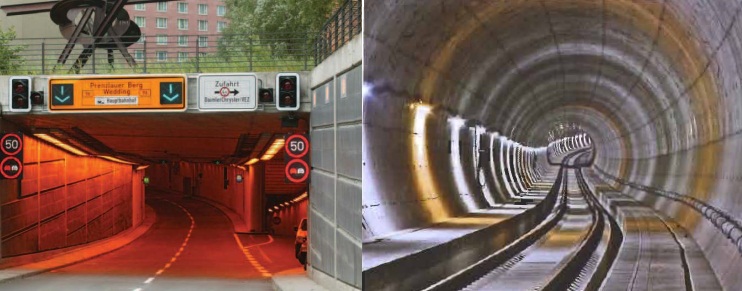
Following the reunification of Germany and the choice of Berlin as capital city, the Tiergarten Tunnel was built to improve road and rail links through the city centre, connecting long-distance rail lines, freeing up road space for regeneration and redevelopment projects, and eliminating traffic through Tiergarten Park. The new Hauptbahnhof (Central Station) forms part of the project.
The project faced public opposition and opened, in 2006, several years behind schedule. The original plan also included a metro tunnel (which finally opened in 2009) and a city railway tunnel (yet to open).
Downloads
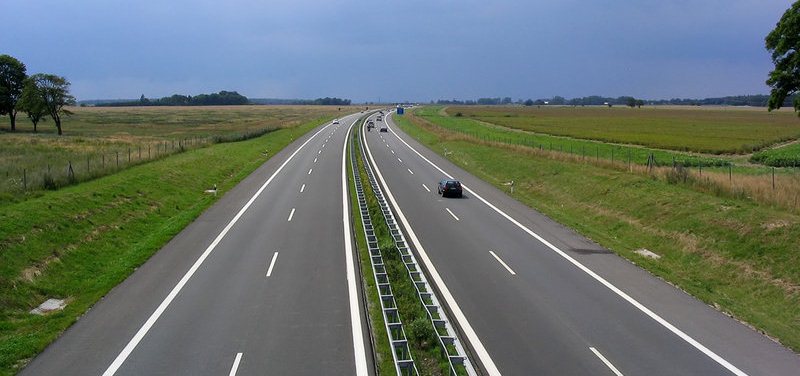
Bundesautobahn 20 (Autobahn 20, BAB 20 or A 20 for short) is one of a programme of German Unity Transport Projects built following reunification to link the old and new Federal states together, and also forms part of the EU Trans-European Road Network. It is colloquially known as Ostseeautobahn, due to its geographic location near the Baltic Sea coastline.
At 323km, the A 20 is the longest continuously built new autobahn since 1945. It was designed to be opened in stages, with construction starting in 1992, the first section opening in 1997 and the official opening ceremony in December 2005.
Downloads
Greece
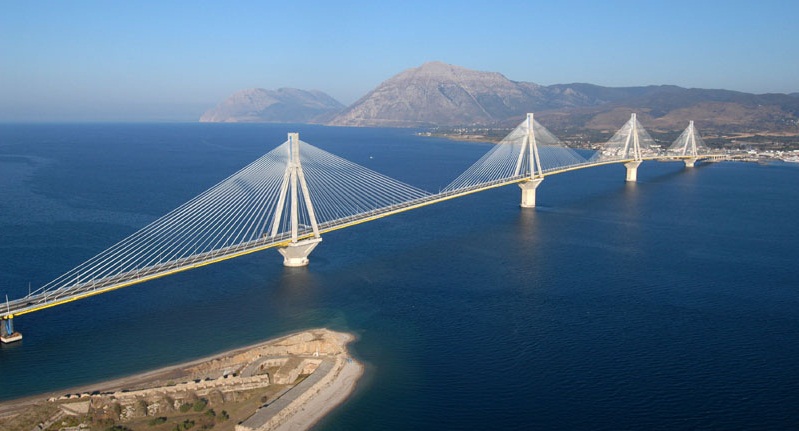
The Rion-Antirion Bridge is the second longest multi-span cable-stayed bridge in the world (the Millau Viaduct is the longest). It was designed and built to cope with exceptionally difficult physical conditions, including high water depths, strong winds, seismic activity and weak soil, and is considered an engineering masterpiece.
The Bridge opened in 2004 and was part of the Olympic Torch route for the 2004 Games. It crosses the Gulf of Corinth near the port of Patras, links two national road axes and is part of the EU TEN-T priority network of transport infrastructure.
Downloads
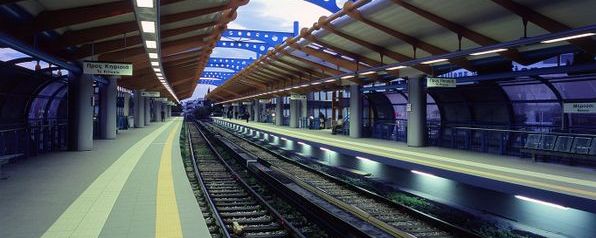
The Athens Metro Base Project is a 17.6km underground rapid transit network in metropolitan Athens. First proposed in the 1960s and approved against a background of increasing traffic congestion in the 1970s, construction began in 1992.
Its two lines serve 20 stations and opened in three stages in 2000 and 2003. The two lines connect at Syntagma station, and three other stations provide connections to the pre-existing metropolitan railway line. The Metro network has since been extended five times and is now 51km long with 32 stations. Four further extensions are in progress.
Downloads
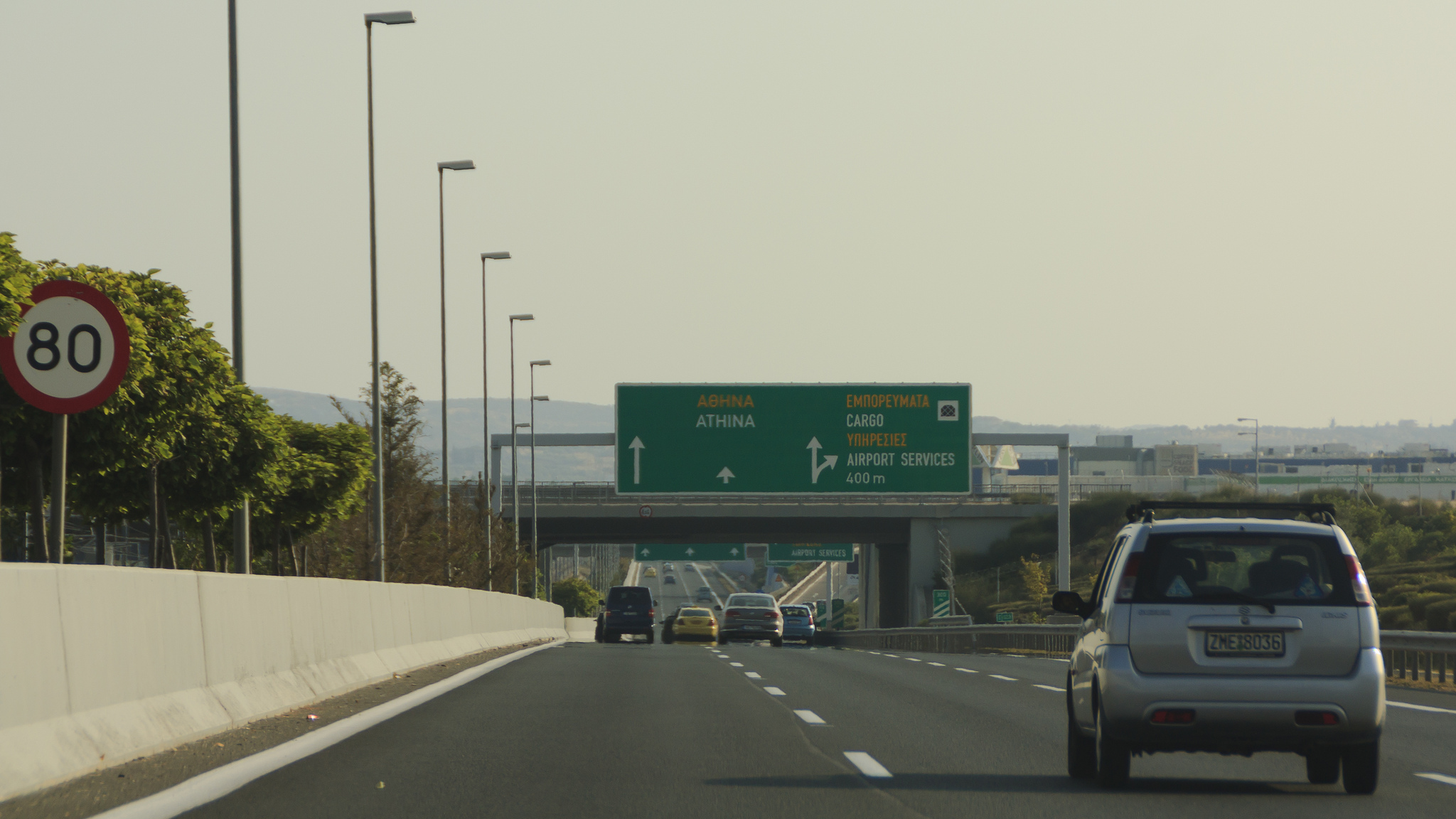
Attiki Odos,a closed toll motorway 65km in length, was the first public-private partnership project in Greece. It opened in three sections, in 2001, 2003 and 2004.
It forms a ring road for the greater metropolitan area of Athens and a backbone of the transport network of the entire region, connecting thirty municipalities and major transport infrastructures including the new international airport. It is also part of the EU PATHE TEN-T priority axis.
Downloads
Hong Kong
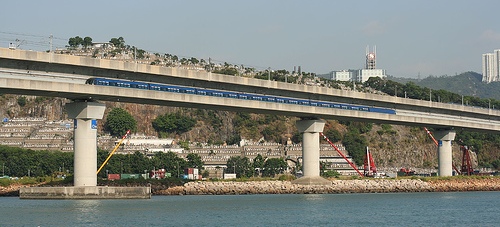
The world’s first railway built specifically as a dedicated express service between city centre and airport, the Hong Kong Airport Railway also serves the new town of Tung Chung in Lantau and was conceived as a combination of express and local services. It opened in 1998 with six stations. Nam Chung station opened in 2003, and Sunny Bay station and the extension to AsiaWorld Expo opened in 2005.
The construction of the line spanned the transfer of Hong Kong’s sovereignty to China in 1997 and negotiations between the British and Chinese governments on financial support formed a crucial stage in its timeline.
Downloads
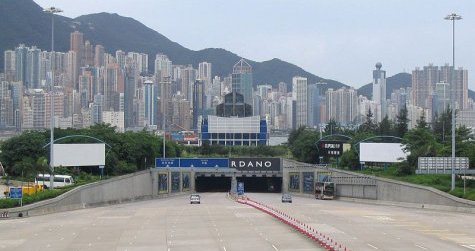
Western Harbour Crossing (WHC) is the third cross harbour road tunnel in Hong Kong, and was the first dual three-lane immersed tunnel in South-East Asia when it opened in 1997. It is a build-operate-transfer project funded through tolls.
It was part of the Airport Core Program of infrastructure supporting the new Hong Kong International Airport, but was also considered as a self-sustaining transport link. However, patronage has remained low due to high toll fees.
Downloads
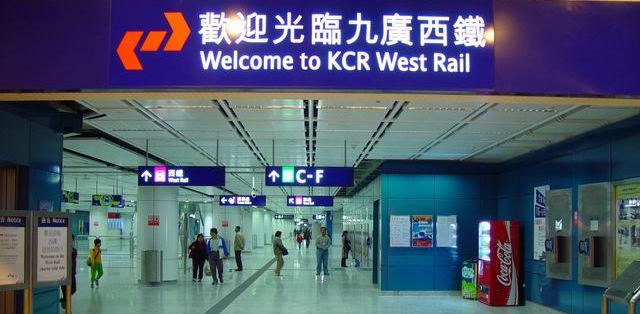
West Rail is a passenger railway line, 30.5km in length, linking Kowloon to the new towns of Hong Kong’s Northwest New Territories. It opened in December 2003.
The line was intended to cater for projected population growth and travel demand, improving transport links to the New Territories and facilitating further development in the region in the longer term.
Downloads
Japan
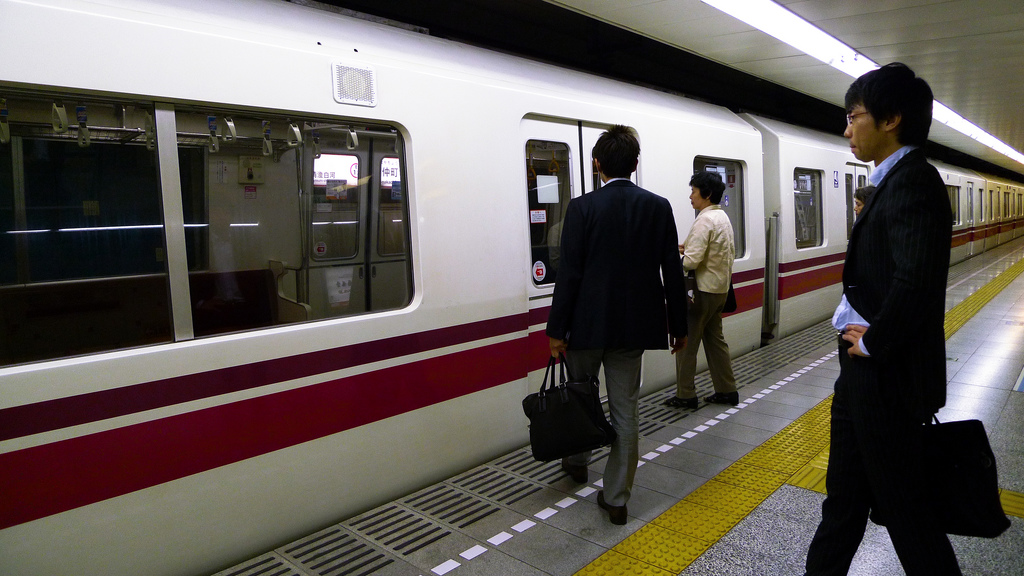
A 41km subway line, OEDO provides an orbital route linking the existing radial routes in Tokyo. It has 38 stations, of which 26 connect to other subway lines.
It was financed and built mostly by the ‘third-sector’ body Tokyo Subway established for the purpose (the smaller radial section was an earlier public sector project), and opened in 2000. It uses innovative technologies such as linear motors and lightweight aluminium bodies.
Downloads
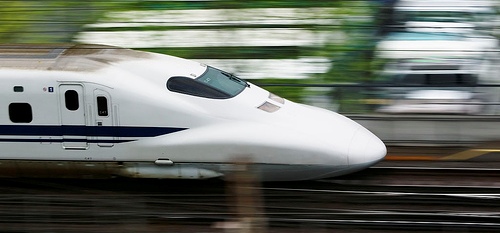
A high speed rail line, from Kagoshima to Yatsushiro on the Japanese island of Kyushu, consisting of 127km of track, including 88km in tunnel and 25km of bridge. The line opened in March 2004.
The project includes five stations, in the cities of Yatsushiro, Minamata, Izumi, Sendai and Kagoshima. It is part of the country-wide Shinkansen high speed railway network, the overall aim of which is to encourage decentralisation of population and economic growth. It represents approximately half of the section planned for Kyushu.
Downloads
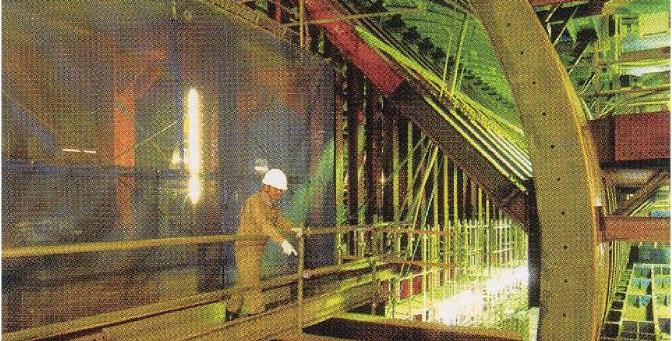
The ‘Yamate Tunnel’ is a 6.7km tunnel section of the C2 Route, the second of two circular highways around Tokyo. It opened in 2007, following a planning period stretching back to 1970.
The first, C1, Route opened in time for the Olympic Games in 1964, but road building came to a halt in the 1970s in the face of public and political opposition. The choice of a tunnel solution through this densely inhabited area helped to resolve conflict but depended on the development of new techniques such as shield tunnelling. The tunnel is one of the world’s longest in an urban area, runs alongside major utility infrastructure and is crossed by eleven rail lines.
Downloads
Netherlands
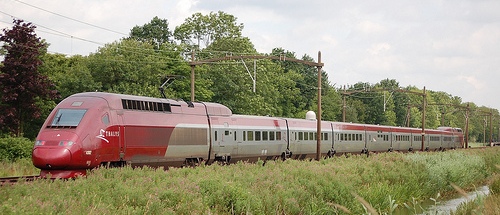
HSL-Zuid (Hogesnelheidslijn Zuid) is a high speed rail line, 125km long, between Amsterdam Zuid, Schiphol Airport and Rotterdam. It continues across to the Dutch/Belgian border, connecting with services to Antwerp, Brussels and Paris. Originally scheduled for completion in 2007, it opened in 2009.
Amsterdam Zuid has become the site of major redevelopment and is now a prominent business district. HSL-Zuid has also been a catalyst for the ongoing extensive redevelopment of several other stations.
Downloads
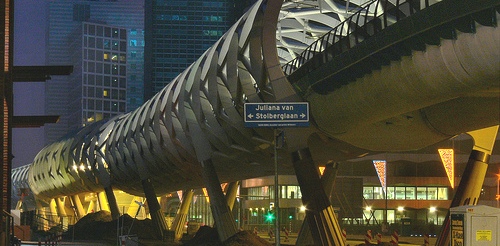
RandstadRail is a light rail project in the south of the Randstad conurbation in The Netherlands, connecting the cities of The Hague and Rotterdam, the growth town of Zoetermeer, and the suburban areas between.
The project was developed through collaboration between the local authorities and transport providers of the two cities, the national transport ministry and national rail provider, NS. It involved adapting two heavy rail lines owned by NS to light rail operation.
Downloads
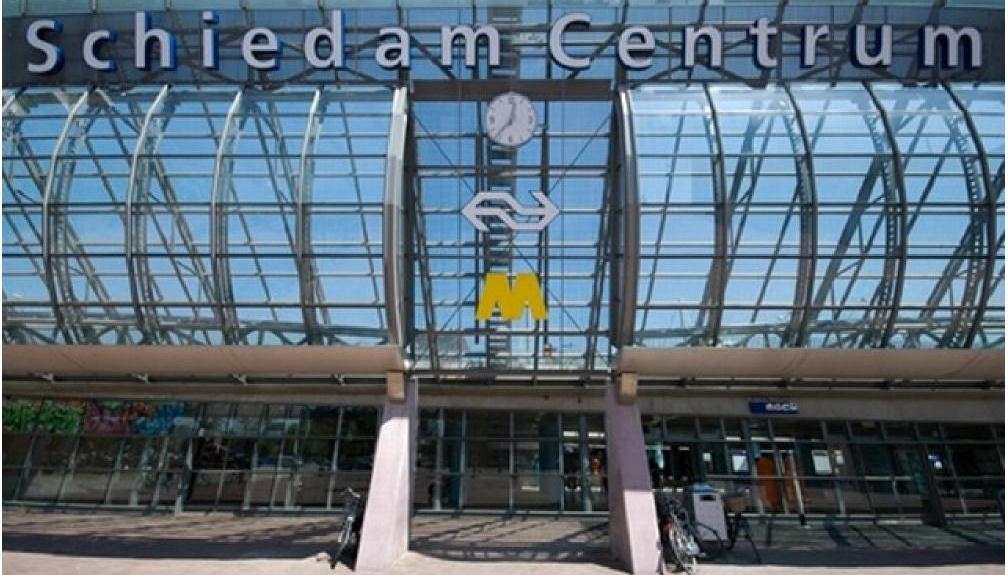
The Beneluxlijn was built as an extension of the metro network in Rotterdam and opened in 2002. It provides a connection between the Calandlijn and Erasmuslijn, a link between the city and the neighbouring towns of Schiedam and Spijkenisse, and an additional river crossing through the Beneluxtunnel.
Of three projects proposed at the end of the 1980s (the Randstadrail was another), the Beneluxlijn was considered the least important. However, it became a higher priority with the decision to include a metro line in the second Beneluxtunnel.
Downloads
Sweden
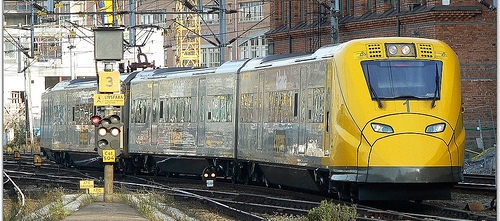
The Arlanda Rail Link was the first infrastructure project in Sweden to be funded through a public-private partnership. It was intended to provide a sustainable means of transport to Stockholm’s Arlanda Airport, and thus to support the Airport’s bid for a third runway.
The Link opened in 1999. The A-Train consortium, operator of the Link under a 30-year concession contract, was bought by Macquarie Group Ltd in 2004.
Downloads
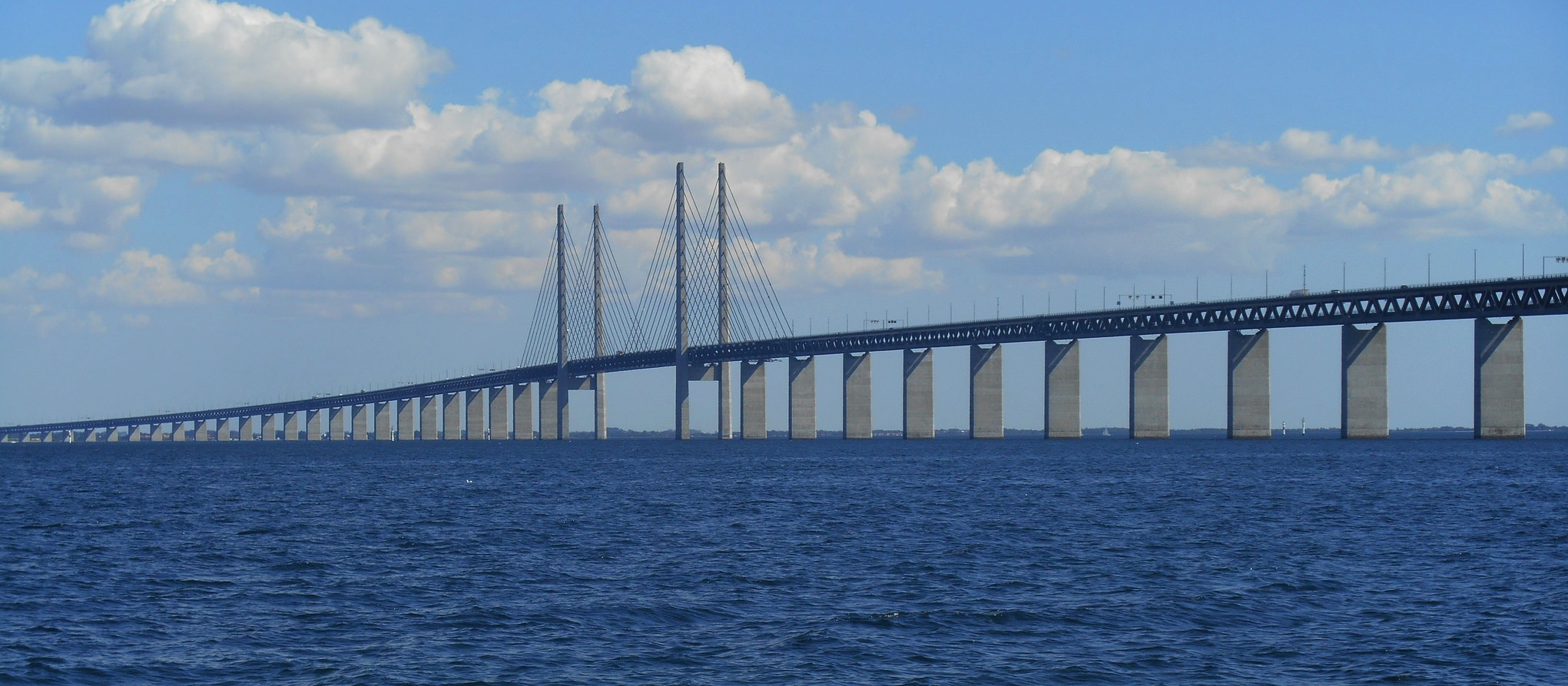
A road and rail link across the Oresund between Sweden and Denmark, consisting of a bridge 7.8km long and a tunnel 4km long, the Oresund Link has been associated with major developments at Bridge City in Malmö, Sweden, and Ørestad in Copenhagen, Denmark.
The two governments first agreed to build the Link in 1973, although its potential role in encouraging cross-border regional development emerged only in the late 1980s. Construction began in 1997 and the Link was inaugurated in 2000.
Downloads
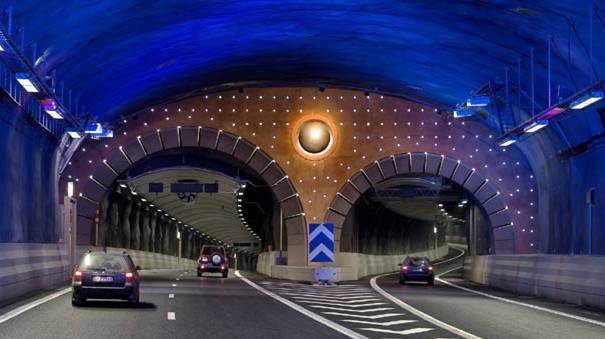
The largest highway tunnel project in Sweden, the Southern Link connects major roads in the south of the Greater Stockholm area, relieving the pressure of local traffic in the city centre. It provides access to the Hammarby Sjöstad waterfront regeneration area, a site originally planned as the Olympic Village in the city’s unsuccessful bid for the 2004 Games.
Initially planned as a toll-financed scheme, the Link was part of a wider package of transport infrastructure improvements negotiated in the Dennis Agreement of 1992. When the Agreement collapsed after years of public and political opposition, plans for tolls were dropped. Construction of the Link finally began in 1997, financed mainly by the Swedish government. It opened to traffic in 2004.
Downloads
United Kingdom
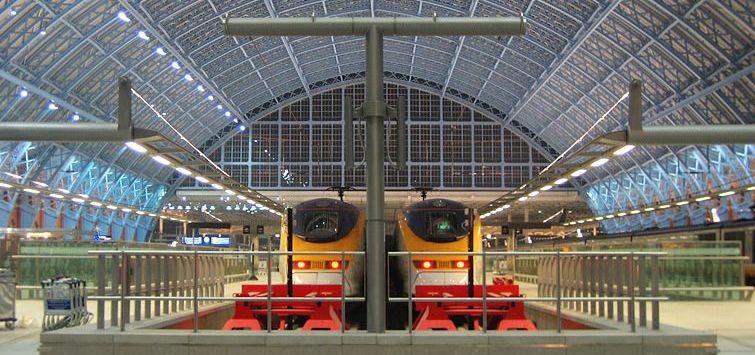
CTRL is a double track high speed rail link from the Channel Tunnel to central London. It opened in November 2007 and serves three intermediate stations. All four stations have become major hubs for development and regeneration of the surrounding areas:
- London St Pancras International Station in Central London
- Stratford International Station in East London
- Ebbsfleet International Station in North Kent
- Ashford International Station in mid-Kent
Downloads
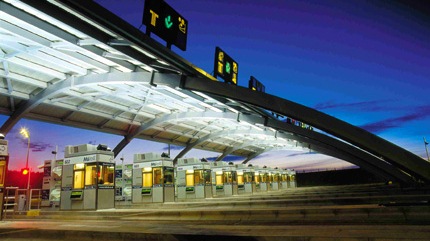
The M6 Toll, a 43km dual three-lane tolled motorway, provides a ‘congestion-free’ alternative to a section of the busy M6 motorway through Birmingham and the Black Country in the West Midlands region.
The first and, to date, only privately financed road in the UK, the M6 Toll had a long and controversial gestation period including the longest public inquiry into a road in the UK.
Downloads
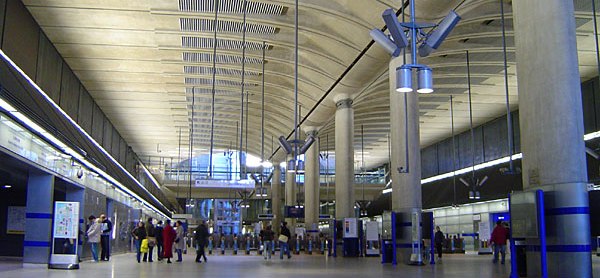
An extension to the London Underground Jubilee Line, from Westminster in central London to Stratford in East London, the 16km JLE is one of the world’s most expensive projects. Delays and cost overruns marked its progress, from the collapse of its initial backer, Olympia & York, in 1992 to the high wages demanded by electricians to complete it in time for the 1999/2000 Millennium Celebrations. Although associated with major development and regeneration initiatives at Westminster, Southwark, North Greenwich and Stratford (now the site of the 2012 Olympic Games and served by the Channel Tunnel Rail Link, its history is most closely linked to that of the new financial centre at Canary Wharf.
Downloads
United States of America
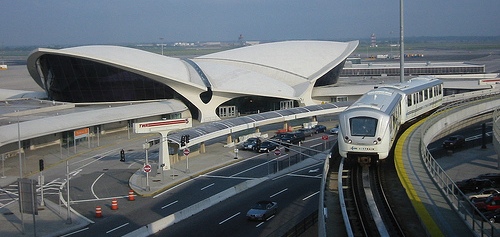
The Airtrain is a double-track light rail service linking the terminals in JFK Airport to regional transport hubs. It was funded through the Federal Aviation Administration’s Passenger Facility Charge and opened in 2003.
The project was intended to provide improved journey times and an alternative to car access to the airport, but has also become associated with a broader vision for the economic regeneration of the Jamaica area in Queens.
Downloads
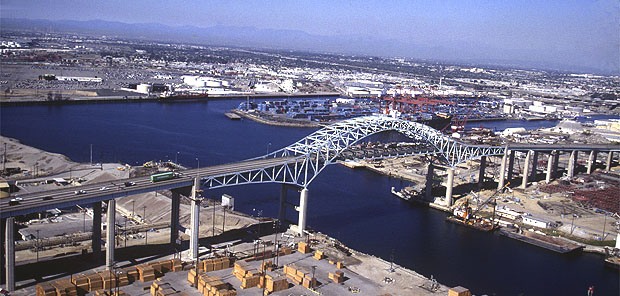
The Alameda Corridor, a 32km express freight rail line, links Los Angeles and Long Beach ports to the national rail network and railyards of Los Angeles. It opened in 2002.
The line is funded through user fees paid by private railroads. It allows trains to bypass 145 km of early 20th century branch lines along a high-speed grade-separated corridor, avoiding more than 200 at-grade railroad crossings where cars and trucks previously had to wait for long freight trains to pass.
Downloads

The Central Artery/Tunnel Project – the ‘Big Dig’ – rerouted the Interstate 93 highway through the heart of Boston into a 5.6km tunnel under the city, created the Rose Kennedy Greenway in place of the elevated highway, extended Interstate 90 across Boston Harbor through the new Ted Williams Tunnel to Logan International Airport, and built two bridges over the Charles River.
The project suffered from controversies, delays and cost overruns, becoming the most expensive highway project in the USA. When the last section opened in December 2007, the partnership between program manager Bechtel/Parsons Brinckerhoff and the Massachusetts Turnpike Authority ended.
Downloads
Rail

South West Corridor Railway is a 70km inter-urban railway line running from Perth, the capital of Western Australia, to the town of Mandurah.
The project originated in a long-term aspiration to resurrect the passenger rail network in the region, and includes nine stations, associated bus and park-and- ride facilities, transit-oriented developments, and revisions to bus routes to provide feeder services into rail stations.
Downloads

The Alameda Corridor, a 32km express freight rail line, links Los Angeles and Long Beach ports to the national rail network and railyards of Los Angeles. It opened in 2002.
The line is funded through user fees paid by private railroads. It allows trains to bypass 145 km of early 20th century branch lines along a high-speed grade-separated corridor, avoiding more than 200 at-grade railroad crossings where cars and trucks previously had to wait for long freight trains to pass.
Downloads

The Arlanda Rail Link was the first infrastructure project in Sweden to be funded through a public-private partnership. It was intended to provide a sustainable means of transport to Stockholm’s Arlanda Airport, and thus to support the Airport’s bid for a third runway.
The Link opened in 1999. The A-Train consortium, operator of the Link under a 30-year concession contract, was bought by Macquarie Group Ltd in 2004.
Downloads

The world’s first railway built specifically as a dedicated express service between city centre and airport, the Hong Kong Airport Railway also serves the new town of Tung Chung in Lantau and was conceived as a combination of express and local services. It opened in 1998 with six stations. Nam Chung station opened in 2003, and Sunny Bay station and the extension to AsiaWorld Expo opened in 2005.
The construction of the line spanned the transfer of Hong Kong’s sovereignty to China in 1997 and negotiations between the British and Chinese governments on financial support formed a crucial stage in its timeline.
Downloads

The Airtrain is a double-track light rail service linking the terminals in JFK Airport to regional transport hubs. It was funded through the Federal Aviation Administration’s Passenger Facility Charge and opened in 2003.
The project was intended to provide improved journey times and an alternative to car access to the airport, but has also become associated with a broader vision for the economic regeneration of the Jamaica area in Queens.
Downloads

West Rail is a passenger railway line, 30.5km in length, linking Kowloon to the new towns of Hong Kong’s Northwest New Territories. It opened in December 2003.
The line was intended to cater for projected population growth and travel demand, improving transport links to the New Territories and facilitating further development in the region in the longer term.
Downloads
High Speed Rail

HSL-Zuid (Hogesnelheidslijn Zuid) is a high speed rail line, 125km long, between Amsterdam Zuid, Schiphol Airport and Rotterdam. It continues across to the Dutch/Belgian border, connecting with services to Antwerp, Brussels and Paris. Originally scheduled for completion in 2007, it opened in 2009.
Amsterdam Zuid has become the site of major redevelopment and is now a prominent business district. HSL-Zuid has also been a catalyst for the ongoing extensive redevelopment of several other stations.
Downloads

TGV Méditerranée is part of the TGV Network of high speed rail lines linking major cities in France. It opened in 2001.
Initially controversial, the project sparked off a protest movement and helped trigger new legislation affecting the decision-making procedure for major transport projects. With a journey time of three hours between Paris and Marseille, the line has attracted passengers from the airline and now handles two-thirds of all journeys.
Downloads

Opened in 2002, the 177km NBS Cologne-Rhine/Main line is the first rail track in Germany to be built exclusively for high-speed passenger trains. One of the steepest high-speed lines in the world, it require trains with a high power-to-weight ratio such as the new ICE3 trains.
It is part of the European high-speed rail network linking Paris, Brussels, Cologne/Frankfurt, Amsterdam and London, and has reduced the journey time between the two cities by half. It also serves the two airports of Frankfurt and Cologne Bonn.
Downloads

CTRL is a double track high speed rail link from the Channel Tunnel to central London. It opened in November 2007 and serves three intermediate stations. All four stations have become major hubs for development and regeneration of the surrounding areas:
- London St Pancras International Station in Central London
- Stratford International Station in East London
- Ebbsfleet International Station in North Kent
- Ashford International Station in mid-Kent
Downloads

A high speed rail line, from Kagoshima to Yatsushiro on the Japanese island of Kyushu, consisting of 127km of track, including 88km in tunnel and 25km of bridge. The line opened in March 2004.
The project includes five stations, in the cities of Yatsushiro, Minamata, Izumi, Sendai and Kagoshima. It is part of the country-wide Shinkansen high speed railway network, the overall aim of which is to encourage decentralisation of population and economic growth. It represents approximately half of the section planned for Kyushu.
Downloads
Metro

Météor (Paris Metro Line 14) is the first driverless line to be fully integrated into the Paris metro system. The planning and construction process was fast in comparison to other French transport projects, but funding problems caused delays and the line was opened in three sections, in 1998, 2003 and 2007.
Météor is associated with three urban development zones in the city – Paris Rive Gauche, Chalon and Corbineau-Lachambeaudie to Bercy – and with the regeneration of the 13th arrondissement.
Downloads

An extension to the London Underground Jubilee Line, from Westminster in central London to Stratford in East London, the 16km JLE is one of the world’s most expensive projects. Delays and cost overruns marked its progress, from the collapse of its initial backer, Olympia & York, in 1992 to the high wages demanded by electricians to complete it in time for the 1999/2000 Millennium Celebrations. Although associated with major development and regeneration initiatives at Westminster, Southwark, North Greenwich and Stratford (now the site of the 2012 Olympic Games and served by the Channel Tunnel Rail Link, its history is most closely linked to that of the new financial centre at Canary Wharf.
Downloads

A 41km subway line, OEDO provides an orbital route linking the existing radial routes in Tokyo. It has 38 stations, of which 26 connect to other subway lines.
It was financed and built mostly by the ‘third-sector’ body Tokyo Subway established for the purpose (the smaller radial section was an earlier public sector project), and opened in 2000. It uses innovative technologies such as linear motors and lightweight aluminium bodies.
Downloads

The Athens Metro Base Project is a 17.6km underground rapid transit network in metropolitan Athens. First proposed in the 1960s and approved against a background of increasing traffic congestion in the 1970s, construction began in 1992.
Its two lines serve 20 stations and opened in three stages in 2000 and 2003. The two lines connect at Syntagma station, and three other stations provide connections to the pre-existing metropolitan railway line. The Metro network has since been extended five times and is now 51km long with 32 stations. Four further extensions are in progress.
Downloads

RandstadRail is a light rail project in the south of the Randstad conurbation in The Netherlands, connecting the cities of The Hague and Rotterdam, the growth town of Zoetermeer, and the suburban areas between.
The project was developed through collaboration between the local authorities and transport providers of the two cities, the national transport ministry and national rail provider, NS. It involved adapting two heavy rail lines owned by NS to light rail operation.
Downloads

The Beneluxlijn was built as an extension of the metro network in Rotterdam and opened in 2002. It provides a connection between the Calandlijn and Erasmuslijn, a link between the city and the neighbouring towns of Schiedam and Spijkenisse, and an additional river crossing through the Beneluxtunnel.
Of three projects proposed at the end of the 1980s (the Randstadrail was another), the Beneluxlijn was considered the least important. However, it became a higher priority with the decision to include a metro line in the second Beneluxtunnel.
Downloads
Motorway

CityLink joins three existing radial highways together with tolled sections of road to provide a fast route through the centre of Melbourne. An electronic tolling system was developed and implemented as part of the project.
The project was funded through a private sector concession contract. It is associated with the redevelopment of unused docklands between the central business district and the River Yarra, and the expansion of container traffic through the city’s port.
Downloads

The M6 Toll, a 43km dual three-lane tolled motorway, provides a ‘congestion-free’ alternative to a section of the busy M6 motorway through Birmingham and the Black Country in the West Midlands region.
The first and, to date, only privately financed road in the UK, the M6 Toll had a long and controversial gestation period including the longest public inquiry into a road in the UK.
Downloads

Bundesautobahn 20 (Autobahn 20, BAB 20 or A 20 for short) is one of a programme of German Unity Transport Projects built following reunification to link the old and new Federal states together, and also forms part of the EU Trans-European Road Network. It is colloquially known as Ostseeautobahn, due to its geographic location near the Baltic Sea coastline.
At 323km, the A 20 is the longest continuously built new autobahn since 1945. It was designed to be opened in stages, with construction starting in 1992, the first section opening in 1997 and the official opening ceremony in December 2005.
Downloads

The largest highway tunnel project in Sweden, the Southern Link connects major roads in the south of the Greater Stockholm area, relieving the pressure of local traffic in the city centre. It provides access to the Hammarby Sjöstad waterfront regeneration area, a site originally planned as the Olympic Village in the city’s unsuccessful bid for the 2004 Games.
Initially planned as a toll-financed scheme, the Link was part of a wider package of transport infrastructure improvements negotiated in the Dennis Agreement of 1992. When the Agreement collapsed after years of public and political opposition, plans for tolls were dropped. Construction of the Link finally began in 1997, financed mainly by the Swedish government. It opened to traffic in 2004.
Downloads

Attiki Odos,a closed toll motorway 65km in length, was the first public-private partnership project in Greece. It opened in three sections, in 2001, 2003 and 2004.
It forms a ring road for the greater metropolitan area of Athens and a backbone of the transport network of the entire region, connecting thirty municipalities and major transport infrastructures including the new international airport. It is also part of the EU PATHE TEN-T priority axis.
Downloads
Bridge

The world’s tallest and longest multispan cable-stayed bridge in the world, the Millau Viaduct is often described as a work of both engineering prowess and architectural grace, and has become a tourist attraction in its own right. It is part of the A75 motorway, crossing the Tarn Valley in the south of France.
It was built in only three years, with 2,000 sections of steel roadway manufactured off-site, lifted into place and aligned using GPS.
Downloads

A road and rail link across the Oresund between Sweden and Denmark, consisting of a bridge 7.8km long and a tunnel 4km long, the Oresund Link has been associated with major developments at Bridge City in Malmö, Sweden, and Ørestad in Copenhagen, Denmark.
The two governments first agreed to build the Link in 1973, although its potential role in encouraging cross-border regional development emerged only in the late 1980s. Construction began in 1997 and the Link was inaugurated in 2000.
Downloads

The Rion-Antirion Bridge is the second longest multi-span cable-stayed bridge in the world (the Millau Viaduct is the longest). It was designed and built to cope with exceptionally difficult physical conditions, including high water depths, strong winds, seismic activity and weak soil, and is considered an engineering masterpiece.
The Bridge opened in 2004 and was part of the Olympic Torch route for the 2004 Games. It crosses the Gulf of Corinth near the port of Patras, links two national road axes and is part of the EU TEN-T priority network of transport infrastructure.
Downloads
Tunnel

Cross City Tunnel (CCT) is a privately financed, constructed, owned and operated toll road which passes to government after 18 December 2035. Improvements to surface roads and pedestrian facilities, and traffic calming measures, were also implemented as part of the project.
Its engineering and construction are considered exemplary, and it opened ahead of schedule. Within a year, however, traffic volumes were only a third of those forecast, the project had been the subject of a Parliamentary Inquiry and the concessionaire had been declared insolvent. The new owners expect to make a profit.
Downloads

Following the reunification of Germany and the choice of Berlin as capital city, the Tiergarten Tunnel was built to improve road and rail links through the city centre, connecting long-distance rail lines, freeing up road space for regeneration and redevelopment projects, and eliminating traffic through Tiergarten Park. The new Hauptbahnhof (Central Station) forms part of the project.
The project faced public opposition and opened, in 2006, several years behind schedule. The original plan also included a metro tunnel (which finally opened in 2009) and a city railway tunnel (yet to open).
Downloads

Western Harbour Crossing (WHC) is the third cross harbour road tunnel in Hong Kong, and was the first dual three-lane immersed tunnel in South-East Asia when it opened in 1997. It is a build-operate-transfer project funded through tolls.
It was part of the Airport Core Program of infrastructure supporting the new Hong Kong International Airport, but was also considered as a self-sustaining transport link. However, patronage has remained low due to high toll fees.
Downloads

The ‘Yamate Tunnel’ is a 6.7km tunnel section of the C2 Route, the second of two circular highways around Tokyo. It opened in 2007, following a planning period stretching back to 1970.
The first, C1, Route opened in time for the Olympic Games in 1964, but road building came to a halt in the 1970s in the face of public and political opposition. The choice of a tunnel solution through this densely inhabited area helped to resolve conflict but depended on the development of new techniques such as shield tunnelling. The tunnel is one of the world’s longest in an urban area, runs alongside major utility infrastructure and is crossed by eleven rail lines.
Downloads

The Central Artery/Tunnel Project – the ‘Big Dig’ – rerouted the Interstate 93 highway through the heart of Boston into a 5.6km tunnel under the city, created the Rose Kennedy Greenway in place of the elevated highway, extended Interstate 90 across Boston Harbor through the new Ted Williams Tunnel to Logan International Airport, and built two bridges over the Charles River.
The project suffered from controversies, delays and cost overruns, becoming the most expensive highway project in the USA. When the last section opened in December 2007, the partnership between program manager Bechtel/Parsons Brinckerhoff and the Massachusetts Turnpike Authority ended.
Downloads
